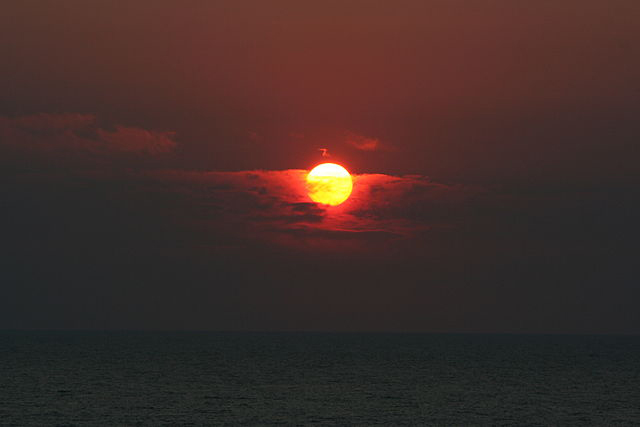
The sun damages roofs by a process called photo-degradation. During this process ultraviolet photos with high energy content disrupt chemical bonds in polymers (long chains of similar subunits). The absorption of the UV rays causes either breakage or crosslinking of polymer chain, changing both chemical and physical properties of various roofing materials. After UV rays have disrupted the polymers’ baseline chemical properties, polymers react with oxygen and water in the air.
Wood Shake/Shingles and the Sun
Wood can be classified as an organic polymer that is comprised of cellulose; a matrix of fibers that provides overall strength and adhesive properties to wood’s structure. Exposure to ultraviolet rays will cause light wood to appear darker and some dark woods to appear lighter. The color change is a result of UV damage to lignin, a binding polymer in cellulose. In a study by Berdal, Akbari, and Levinson, vertical hanging wood eroded slower than near horizontal hanging wood (like wood shingles). A professional Bryan roof company lays wood shingles according to the designed slope of the roof. Slow slope roofs have shingles laid a near horizontal while steep slope roofs are closer to vertical level.
Asphalt Shingles in the Sun
Asphalt is one the key binding agents of the granules in asphalt shingles. The shingle itself usually contains a felt cloth or fiberglass material, saturated in additives and binding materials, and layered with granules. The asphalt serves as a binding agent of the granules and as a hydrophobic (dislikes or fear of water) barrier to water.
Asphalt is derived from refinement of crude oil, which contains hydrocarbon groups (C=O). In the same 2008 study, researchers Berdal, Akbari, and Levinson found that short wavelength UV rays caused more damage than long wavelength rays. As C=O groups continue to build, the oxidation process also creates SO4 (sulfate groups). The presence of these additional groups causes the shingle to become both hardened and brittle.
Many shingle manufacturers design shingles to use special granules that act as an absorber of UV rays.
Discolored Spots
UV rays are well known to cause discoloration of roofing materials, but exposure to pollutants like SO2 and NO accelerate the process. Organic pigments and coloring tend to have great color or intensity. However, the energy in the sun’s rays are so damaging that few pigments on the market hold well against long term sun exposure.
One apparent color that was particularly susceptible to exposure is ultramarine blue (Berdal, 2008). The cadmium sulfide and cadmium selenide both react with oxygen upon contact. However, manufacturers help isolate roofing materials from environmental conditions by using certain pigment types.
One organic pigment that a Bryan, TX roofing company can use to shield shingles from UV rays is called phthalocyanine or “phthalo” (Berdal, 2008). When used with a chromium oxide green pigment, the resulting color is brighter. Wear on the color from the sun still occurs, however, instead of chalking from the oxidation, the roofing pigment becomes muted and not as vibrant over the course of 25 years.
Schulte Roofing is a Bryan roofing company that has been providing Bryan, TX roofing that holds color and resists sun damage longer than conventional roofing systems. Your local roofing contractor should routinely go beyond the standard manufacturer’s build guidelines in order to design and build a roof for your budget. Schulte Roofing backs all Bryan, TX roofs with the Bulletproof Roof® Guarantee.
Reference: Berdahl, Paul; Akbari, Hashem; Levinson, Ronnen; & Miller, William A.(2008). Weathering of Roofing Materials-An Overview. Lawrence Berkeley National Laboratory: Lawrence Berkeley National Laboratory.
